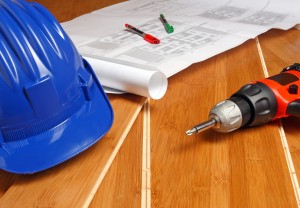 Now that the warm weather has arrived, homeowners are ready to tackle their to-do lists and take on home remodeling projects that were put on hold throughout the winter months. If you’re ready to turn your dreams into reality, it’s important to not only focus on the project’s design, but to also pay attention to the materials used.
Now that the warm weather has arrived, homeowners are ready to tackle their to-do lists and take on home remodeling projects that were put on hold throughout the winter months. If you’re ready to turn your dreams into reality, it’s important to not only focus on the project’s design, but to also pay attention to the materials used.
While new techniques and radically re-thought living concepts are responsible for many green building advancements, it is the materials themselves that have the biggest impact.
General contractor BetterBuilders recommends these popular green building materials to help inspire and focus your spring home remodeling projects:
Decking Materials
Building a new deck to expand and improve the living area during more temperate months is a time honored spring remodeling project. Several decking alternatives feature composites made from a blend of waste wood fiber and recycled plastics. These do well in regards to durability and reuse, but are still made from petroleum products. Hardwoods will be the most natural, but can come with the added cost of depleting a limited resource, while incurring inordinate transportation costs. Perhaps the best bet is to research hardwood alternatives available in your area, or by going with a softer wood that can be preserved with stains containing low levels of volatile organic compounds (VOCs).
Exterior Siding Materials
Re-siding a home can do a lot for its overall aesthetic. Once again, using old-growth hardwood would seem like the way to go, but unless it is certified by the Forest Stewardship Council (FSC), it isn’t deemed sustainable. Metal siding, while less than ideal, is very reusable with some made almost entirely from recycled material. Fiber-cement is an economical compromise between the two, featuring the look of wood while consisting of recycled cement and wood fibers.
Roofing Materials
Most roofing materials leave something to be desired in at least one of the major categories in green building. This is mainly due to weight and production locations. Clay and slate tiles are both low energy input products and very recyclable, but their weight makes shipping distances prohibitive when trying to account for environmental impact. Metal roofing on the other hand is lighter and recyclable, but can account for an increase of metals in ground water. Do your research to see how local resources can affect your decision.
Flooring Materials
Hardwood flooring is ideal if it is FSC certified and from a local source. Rising in popularity are green alternatives, bamboo and cork flooring, because of their rapidly renewable sources. They are available in a variety of different shapes and colors, as well as many different installation options.
Refurbish and Reuse
Of course, the best way to make sure your spring remodeling projects are adhering to sustainability guidelines, like those issued by the Leadership in Energy and Environmental Design (LEED), is to refurbish and reuse materials you already have. Refinishing cabinets that have been cleaned of toxic adhesives or reconditioning stainless steel tubs and sinks for a kitchen remodel works best of all. The less energy used in acquiring new materials, the better off you are.
Courtland Building Company would love to help you plan your green home, call us today: (281) 932-4494
Visit our website: www.courtlandbuildingcompany.com Follow Us on Facebook – Twitter – LinkedIn


